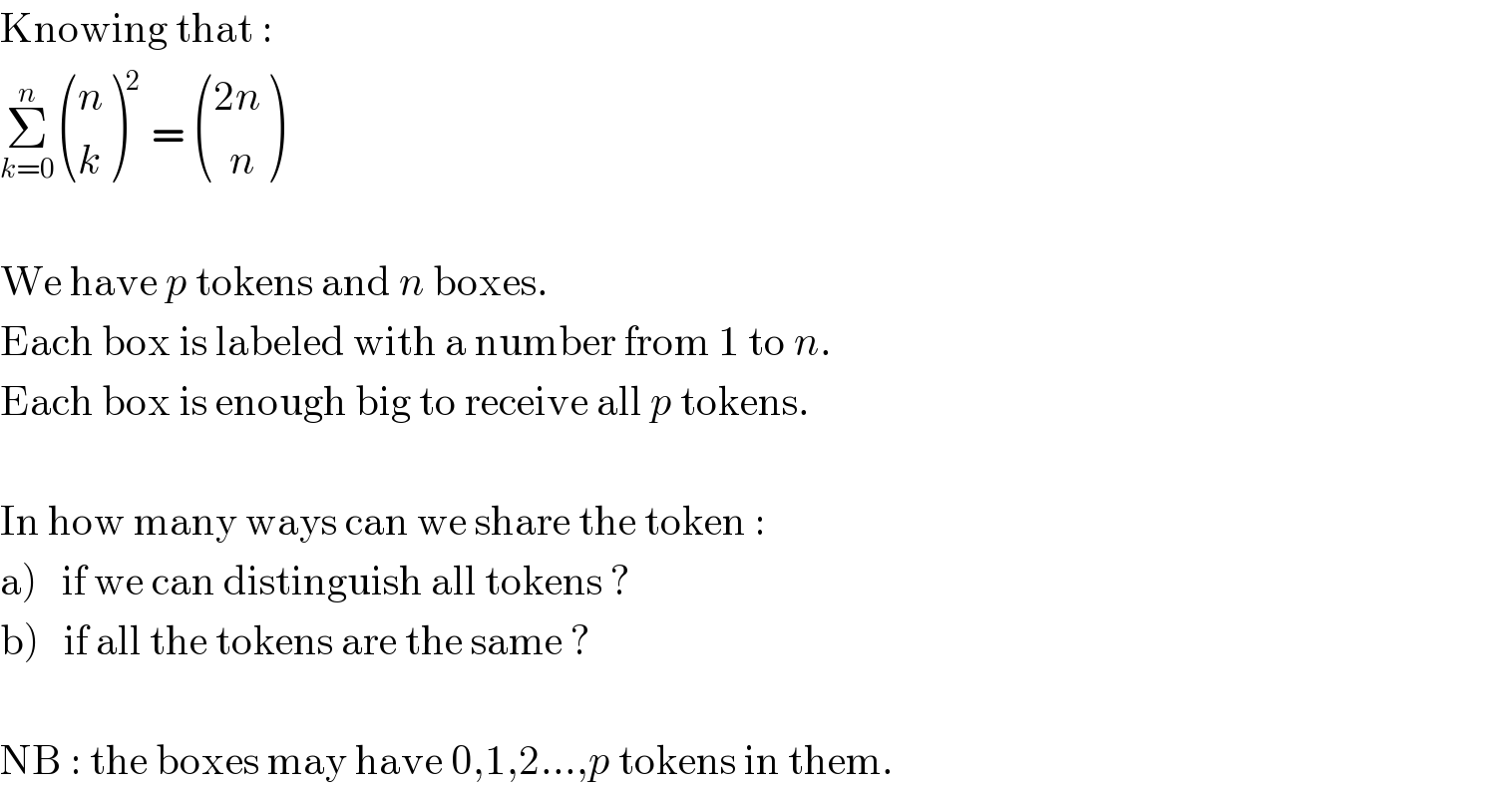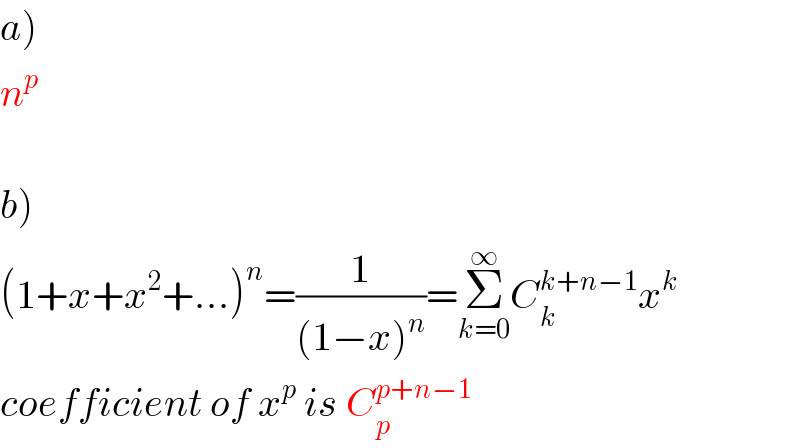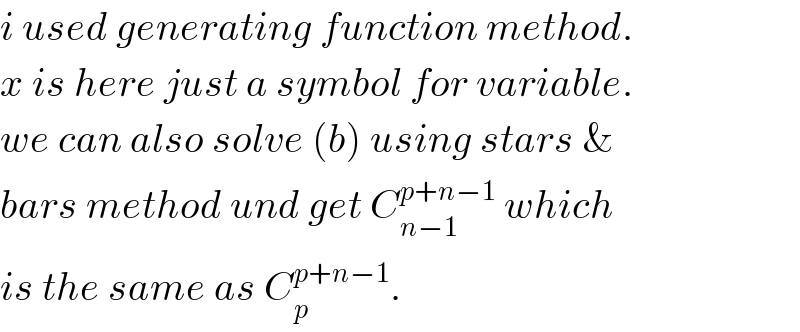
Question and Answers Forum
Question Number 125413 by Hassen_Timol last updated on 11/Dec/20

Commented by Hassen_Timol last updated on 10/Dec/20
Could you help me please...?
Answered by mr W last updated on 11/Dec/20

Commented by Hassen_Timol last updated on 11/Dec/20
Thank you a lot ! I am sorry that I didn't understand but what is x ?
Commented by mr W last updated on 11/Dec/20

Commented by Hassen_Timol last updated on 12/Dec/20
Thank you very much
